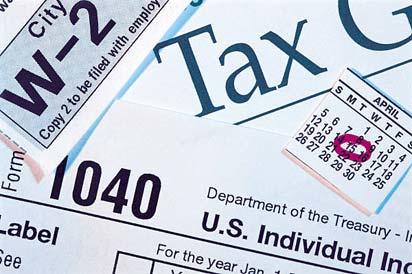Tax loopholes get bad press for being a frequent and unnecessary shortcut the wealthy use for nefarious purposes. In truth, however, there are a number of money-saving tax loopholes available to you, regardless of your income.
Many tax loopholes apply to everyone, but vary in helpfulness depending on your yearly salary. Here’s how these tax loopholes can help you out, broken down by income level.
Read: The 4 Craziest Ways People Have Legally Avoided Paying Taxes
Low-Income Tax Loopholes
American Opportunity Tax Credit
This educational tax benefit is a modified version of the old Hope Credit which has been extended to last through 2017 as the current law is written. It applies to the first four years of college educational expenses, including tuition, books, and other supplies. The credit is worth up to $2,500,but its most attractive feature for low-income families is the fact that up to $1,000 is refundable if you don’t owe any taxes whatsoever.
Savers Tax Credit
Designed to help lower-income families contribute to retirement plans, the first $2,000 of contributions to an IRA or 401(k) can be written off with this credit. The income limits vary depending on filing status; for singles and married individuals filing jointly, the cut off is $30,000 in 2014 and $30,500 in 2015. While the maximum joint credit is $2,000 — $1,000 for individual filers — other credits and deductions can greatly reduce the actual impact this tax credit might have.
Earned Income Tax Credit
The Earned Income Tax Credit is specifically designed with low-income families in mind. The amount of the credit is limited based on both income and the number of children in your household, and ranges from $14,820, if you’re single and have no children, up to $53,267, if you’re married filing jointly with three or more children.
Medium-Income Tax Loopholes
Lifetime Learning Credit
This educational tax credit is limited to just $2,000 over the lifetime of the claimant but comes with relatively high income caps — $127,000 if filing jointly and $63,000 if filing single. The tax credit is available regardless of age or use as long as it qualifies as an educational expense.
Child Tax Credit
The Child Tax Credit is worth up to $1,000 per child in your household under the age of 17. The child must be claimed as a dependent on your taxes, be a U.S. citizen, and be living with you. The credit is phased-out for single taxpayers beginning at $75,000 and $110,000 for married taxpayers filing jointly.
Retirement Savings Accounts
The tax benefits found in retirement plans are huge. The most common are the pre-tax contributions made to 401(k)s and IRAs which reduce the total taxable amount claimed. Other benefits include tax-deferred growth that allows middle class families to save for retirement more efficiently. In the case of the Roth IRA, withdrawals are even tax-free, although they are taxed when contributions are originally made.
High-Income Tax Loopholes
Capital Gains Tax
While capital gains taxes apply to all demographics, they are considerably less than income taxes and mainly benefit high-income families. As of 2015, those that find themselves in the highest tax bracket pay up to 20 percent in capital gains taxes while the majority will still find themselves paying 15 percent. This exception means that investment income is taxed at a much lower rate than earned income, allowing wealthy families to grow their savings at a much faster pace.
This article was contributed by Daniel Cross of GOBankingRates.com, a leading portal for personal finance news and features, offering visitors the latest information on everything from strategies on saving money to getting out of debt.









